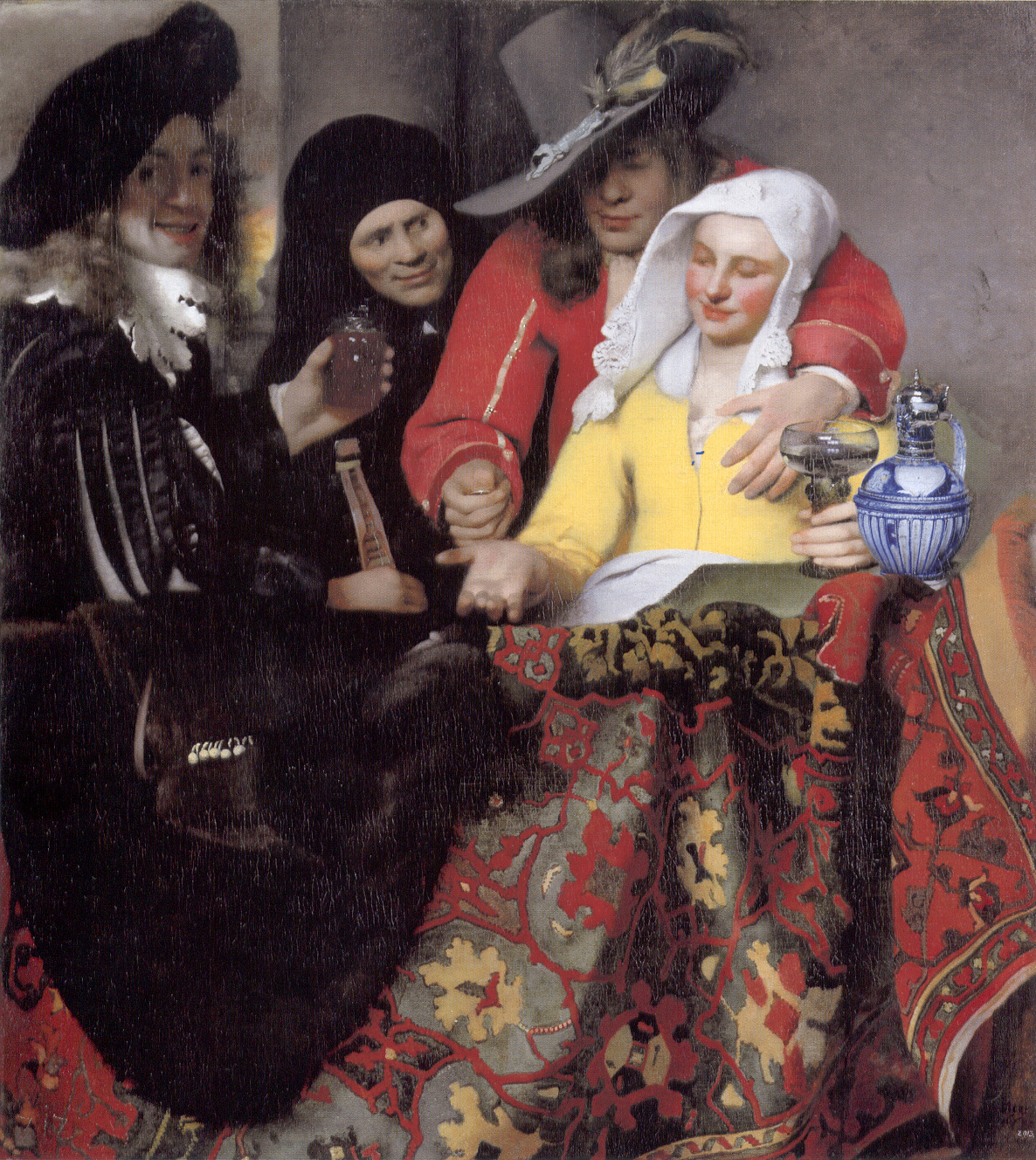The scandal hidden behind Vermeer's elegance
Bei der Kupplerin and prostitution
In 1656, the Dutch Golden Age painter Johannes Vermeer created one of his most intriguing works entitled "Bei der Kupplerin" (The Trial). This painting highlights the prostitution and social interactions of the time.
Historical and social context
The seventeenth century in the Netherlands was a period of prosperity and cultural development, marked by a well-to-do bourgeoisie and a relative tolerance of prostitution. Just like the escorts in Zurich today, prostitutes at the time were often seen as a necessary evil to maintain social order and avoid family tensions.
Bei der Kupplerin: a genre scene
Vermeer was renowned for his genre scenes, i.e. depictions of everyday and domestic life. In "Bei der Kupplerin", a young man is seen offering a gold coin to a young woman, under the watchful eye of an old woman, probably the pimp. This work accurately depicts the financial transactions associated with prostitution, which were common at the time.

Comparison with other artistic works
The theme of prostitution was not unique to Vermeer. Other artists of the Golden Age, such as Frans Hals and Jan Steen, also dealt with this subject in their works. However, Vermeer's depiction of prostitution is distinguished by its subtlety and realism. His figures are often elegantly dressed, which contrasts with the cruder depictions of prostitution in some of his contemporaries' works.
Cinematic influence
The painting "Bei der Kupplerin" inspired the film "The Girl with the Pearl" (2003), which follows Vermeer's life and his relationships with his models. The film also addresses the issue of prostitution through the character of Griet, played by Scarlett Johansson, who is confronted with the reality of this practice.
In conclusion, Vermeer's 'Bei der Kupplerin' is a work that immerses us in the social reality of the 17th century in the Netherlands and offers us a glimpse into the daily life of the time, including prostitution. While the situation of escorts in Zurich has changed considerably since then, it is interesting to see how art has captured these historical moments.
Prostitution in literature and art through the ages.
Prostitution has been a recurring theme in literature and art throughout the centuries, often reflecting the social mores and concerns of the time. Classical authors such as Alexandre Dumas fils and Victor Hugo addressed this theme in their works, presenting characters of prostitutes with tragic fates, such as Marguerite Gautier in "La Dame aux Camélias" or Fantine in "Les Misérables".
In the 20th century, artists such as Pablo Picasso and Henri de Toulouse-Lautrec also depicted prostitution in their paintings, highlighting the nightlife and difficult living conditions of the women involved in this milieu. The works of these artists provide an interesting contrast to those of Vermeer, who depicted prostitution in a more subtle and less provocative way.
Evolution of the perception of prostitution
Over the centuries, the perception of prostitution has evolved from relative tolerance to stronger condemnation, before returning to a more nuanced approach. Today, many countries, including Switzerland, have adopted more liberal legislation on prostitution, allowing sex workers to enjoy better working conditions and protection. However, the debate on the legalisation of prostitution and the rights of sex workers remains heated and complex.
Art as a witness to social change
Works of art, such as Vermeer's "Bei der Kupplerin", bear witness to the evolution of mentalities and social conditions over time. By looking at these works, we can better understand how society perceived and treated prostitution at different times, and how this perception influenced artistic creation. While the conditions of escorts in Zurich and other sex workers have changed over the centuries, art continues to document and question these social realities, offering a unique perspective on our history and cultural evolution.

